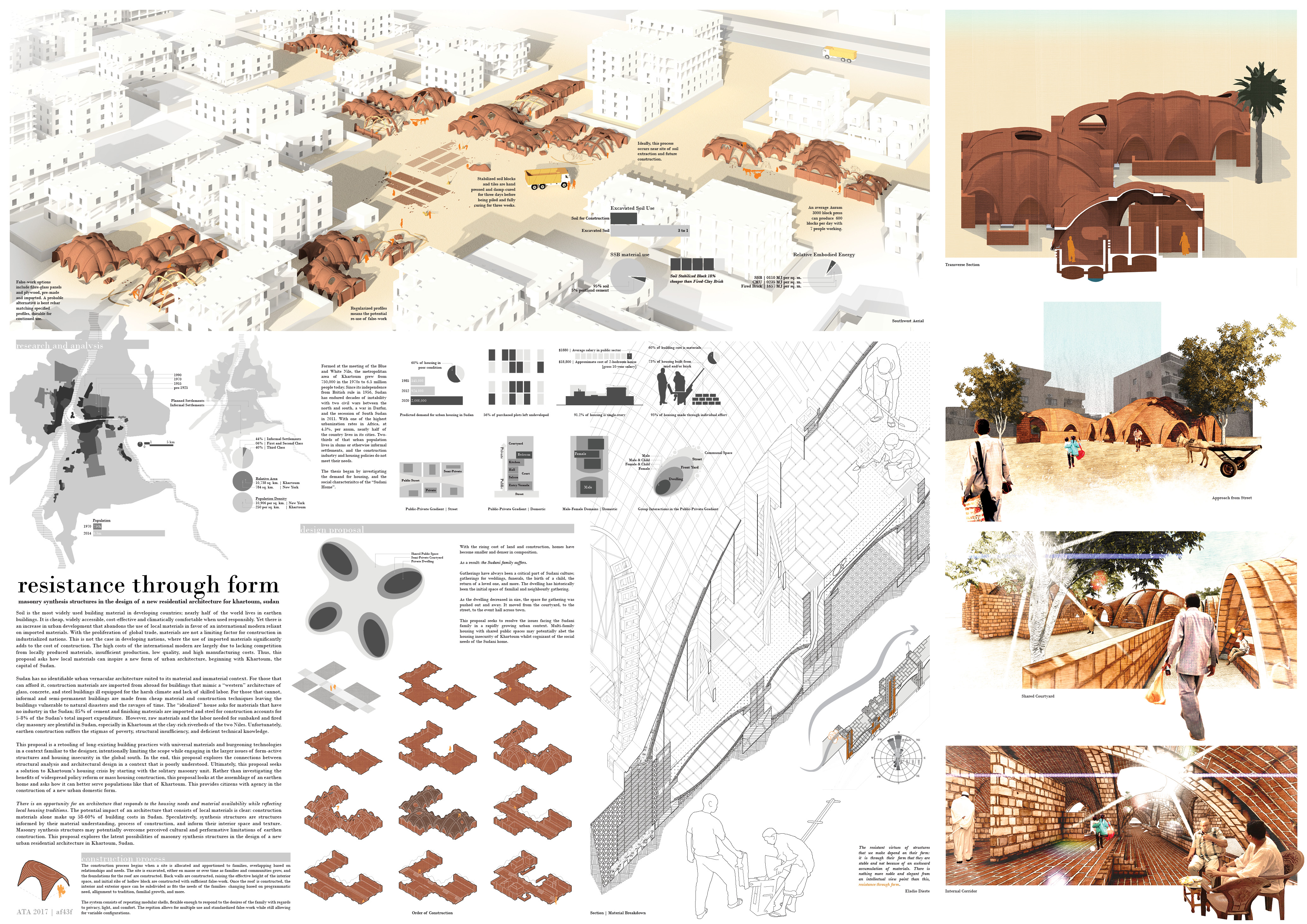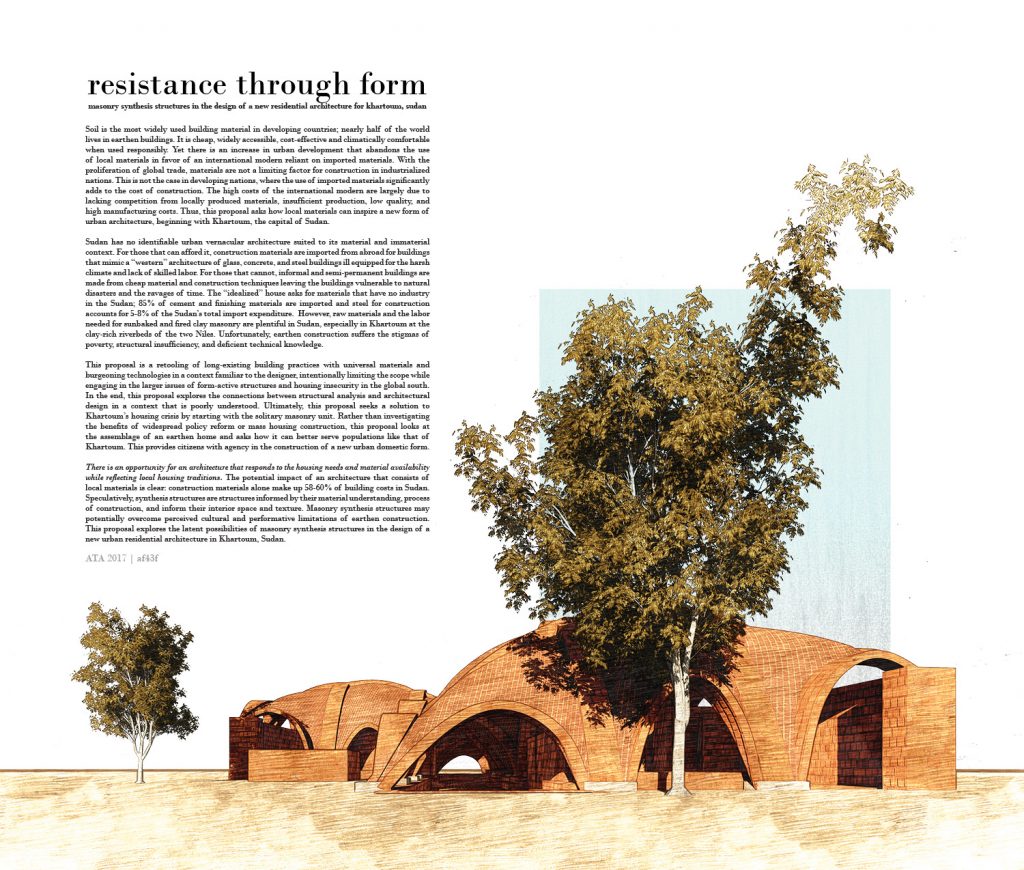There is an opportunity for an architecture that responds to the housing needs and material availability while reflecting local housing traditions. The potential impact of an architecture that consists of local materials is clear: construction materials alone make up 58-60% of building costs in Sudan. Speculatively, synthesis structures are structures informed by their material understanding, process of construction, and inform their interior space and texture. Masonry synthesis structures may potentially overcome perceived cultural and performative limitations of earthen construction. This proposal explores the latent possibilities of masonry synthesis structures in the design of a new urban residential architecture in Khartoum, Sudan.
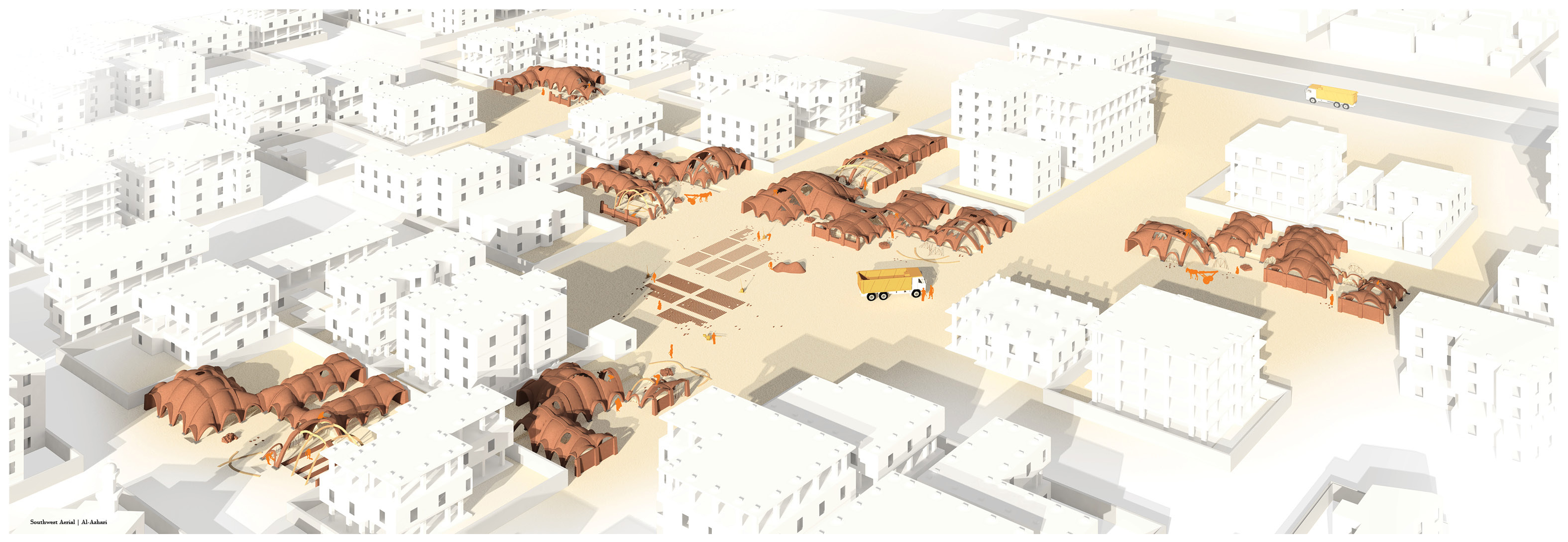
Soil is the most widely used building material in developing countries; nearly half of the world lives in earthen buildings. It is cheap, widely accessible, cost-effective and climatically comfortable when used responsibly. Yet there is an increase in urban development that abandons the use of local materials in favor of an international modern reliant on imported materials. With the proliferation of global trade, materials are not a limiting factor for construction in industrialized nations. This is not the case in developing nations, where the use of imported materials significantly adds to the cost of construction. The high costs of the international modern are largely due to lacking competition from locally produced materials, insufficient production, low quality, and high manufacturing costs. Thus, this proposal asks how local materials can inspire a new form of urban architecture, beginning with Khartoum, the capital of Sudan. Dependent upon the needs of the community, the process of construction both creates and requires communal engagement. The ramifications could outlast the construction of each home, culminating in localized infrastructure and small-scale economic operations.
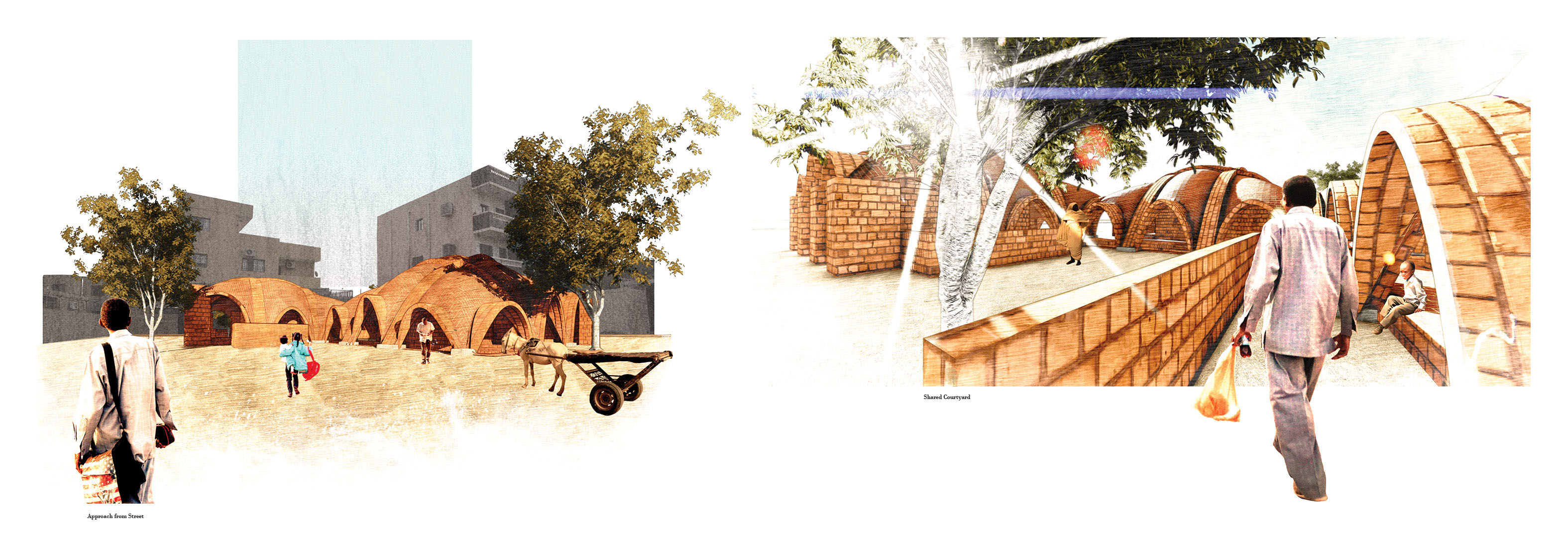
This proposal is a retooling of long-existing building practices with universal materials and burgeoning technologies in a context familiar to the designer, intentionally limiting the scope while engaging in the larger issues of form-active structures and housing insecurity in the global south. In the end, this proposal explores the connections between structural analysis and architectural design in a context that is poorly understood. Ultimately, this proposal seeks a solution to Khartoum’s housing crisis by starting with the solitary masonry unit. Rather than investigating the benefits of widespread policy reform or mass housing construction, this proposal looks at the assemblage of an earthen home and asks how it can better serve populations like that of Khartoum. This provides citizens with agency in the construction of a new urban domestic form.
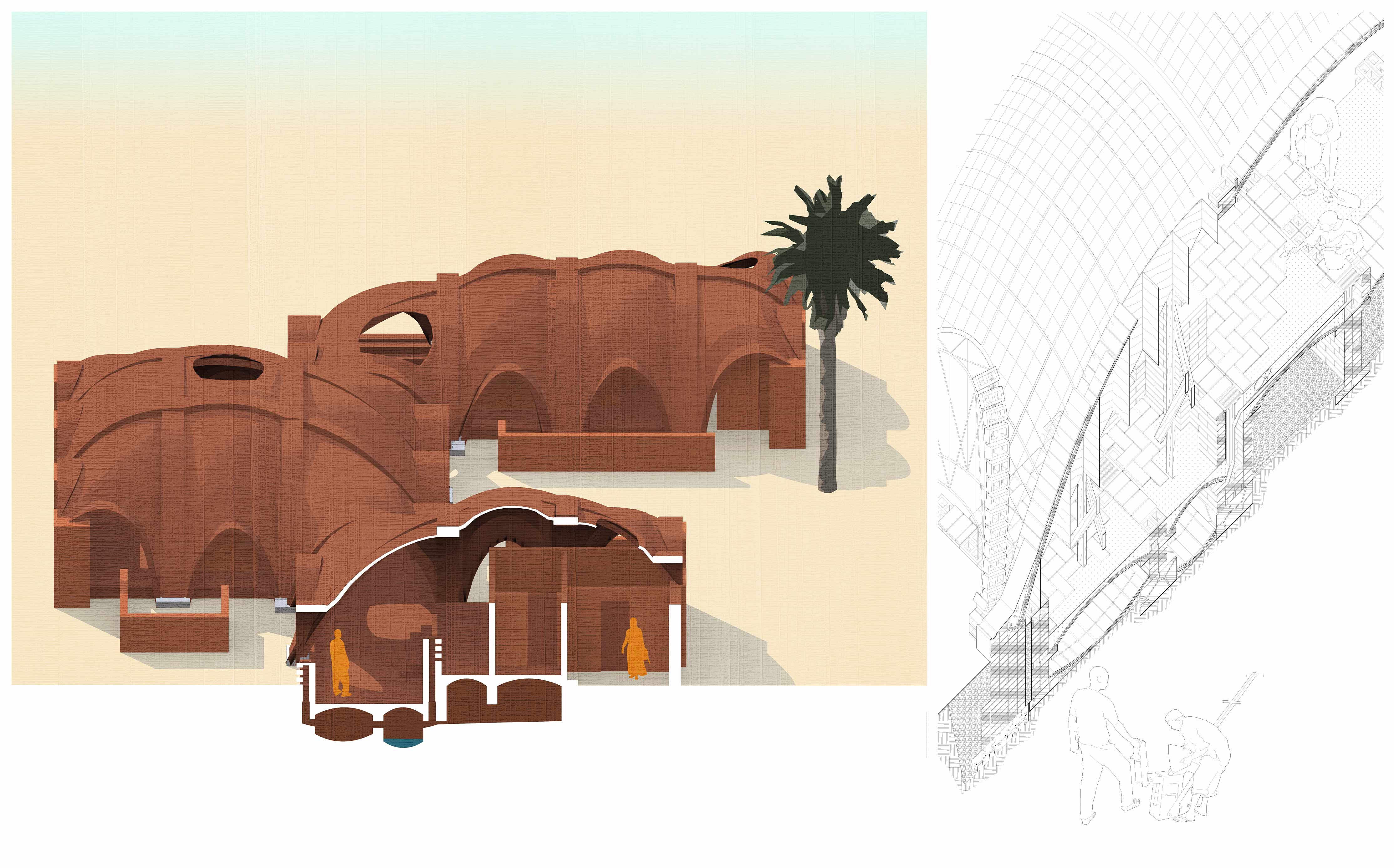
The Board:
